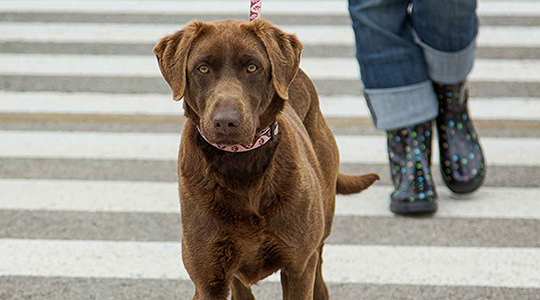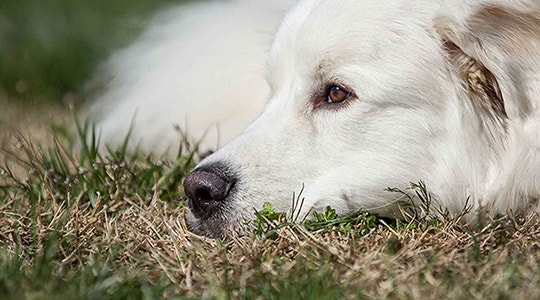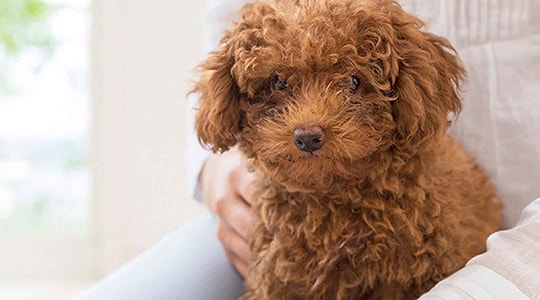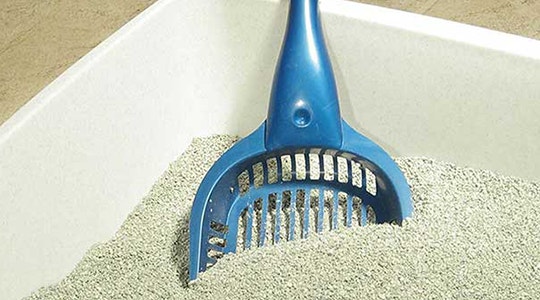
Leashes for Active Dogs
There are so many varieties and styles of leashes on the market these days. So how do you know which one is best for your active dog? Here are a few ways to make a better-informed decision. And, because many dog owners also buy a collar (or harness) when they choose their leash, we’ll take a look at those, as well.
Material differences
Search the shelves and pegboards of a large pet supply store and you’ll find that leashes, collars, and harnesses can be made of leather, nylon, metal chain, and even mountain-climbing rope. Many of those products feature one (or more) of these characteristics: they can be lightweight, reflective, lighted, personalized, decorative, and breed-specific.
Making the right choice
No matter what your dog’s size, shape, or breed, you want a leash that’s durable, safe, and that makes it easy for you to control your dog. And, of course, the collar or harness must fit your dog well. Beyond that, you will find yourself trying to decide between many different varieties.
Here are some of the best leashes, collars, and harnesses for your active canine:
Basic Leashes. A sturdy, six-foot leather, nylon, or chain leash with a good quality metal clip is great for the majority of dogs. It’s practical and lets you keep control of your active dog. The clip should securely fasten to a metal ring on your dog’s collar/harness, and the weight of the leash should always be proportionate to your dog's weight.
Training Leashes. A short leash helps teach dogs to heel. For larger dogs, a one-foot leash is best, while for medium- or smaller-sized dogs, two-foot leashes are ideal.
Mountain Rope Leashes. These leashes are perfect for large dogs. They’re strong, yet lightweight, made of genuine mountain-climbing rope. The mountain-climbing snap hook is strong and dependable, and because it’s made of brass, it won’t rust or chip.
Basic Collars. Nylon and leather collars with either buckled or snap closures are generally a good choice. Snap closures work well for many dogs, but if your dog is large and/or strong, a robust buckled collar is the safer choice.
Head Halters. These collars can help you control your large, energetic dog. When you pull on the leash (attached to a ring under your dog’s chin), you place pressure on his muzzle and neck. This guides his head and body in the direction you want him to go. Head halters, such as the Gentle Leader, are humane alternatives to traditional training collars, and are often much more effective. They also help enable small adults and children to handle big, boisterous dogs. If you decide on a head halter, plan to spend time helping your dog get used to it. And remember, some dogs do not adapt immediately to this alternative.
Double-Layer Collars. These durable, double-woven everyday collars are extremely dependable for big, strong dogs with a lot of get up and go!
Breed-Specific Collars. Many breeds do better with collars designed just for them. For example, Greyhounds, Italian Greyhounds, and Whippets have extremely sensitive necks. So their collars are wider and thicker against the front of their neck, and thinner at the back. This protects them when they pull, which is often, since they were born and bred to run.
Body Harnesses. Ideal for small or toy dogs, a body harness lets you control him without putting pressure on his delicate neck or back.
No-Pull Harnesses. These choke-free, pain-free harnesses offer more control for playful, vigorous dogs of all sizes and breeds.
Special features to look for
In addition to finding leashes and collars that can be customized in a variety of ways, you’ll also find these special feature products:
ID leashes, collars, and harnesses. “Safety first” identification leashes, collars, and harnesses are custom imprinted or embroidered with your dog’s important information. If your energy-filled dog somehow manages to get away from you, he needs all the help you can give him to get home safe.
Reflective/lighted leashes, collars, and harnesses. These are made with reflective and/or lighted material that’s often waterproof. They are invaluable when the sun sets because they reflect headlights from cars and trucks, making your dog much more visible.
Leash, collar, and harness checks
Once a month, do a quick check. Give the collar and/or harness a detailed look. Are they becoming frayed, chewed, or worn? Also, examine your dog’s leash—and don't forget to examine the leash’s connection to the collar or harness. While you’re at it, it’s also a good time to check his tags to make sure all his info is still legible and accurate.
And each time you take your dog out for a walk, be sure his collar or harness fits properly. If your dog is going through a growth spurt, his collar could be a lot snugger than it was a week or two ago. Also, tug firmly on the fastener between his leash and collar—or leash and harness—to make sure it’s secure. With an active dog like yours, you can never be too safe.




